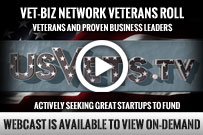Army Lab Teams with Lockheed Martin to Develop Materials
The Army and major contractor, Lockheed Martin have joined forces. The Army Combat Capabilities Development Command’s Army Research Laboratory is teaming up with contractor Lockheed Martin Corp. to develop new synthetic materials to support the warfighter.
The recent five-year agreement cements a commitment to invest in synthetic biology. The intent is to enhance Army operations with improvements to advanced specialty paints for corrosion and protection; high-performance optics for drone sensors; and repair of parts and systems for expeditionary forces, according to an Army release. Applications could also include the civilian market, such as development of non-toxic paint with anti-fungal and anti-mold protection and reductions to the size, weight and cost of diagnostic and surgical devices. A formal program launch is set to be announced later this year.
Officials said the collaborative effort leverages a current tri-service synthetic biology Department of Defense Applied Research for Advancement of Priorities program, the Army’s Institute for Collaborative Biotechnologies and the Army’s Open Campus framework to co-locate academic, Army and industrial personnel in regional technology hubs of Boston, Massachusetts, and Austin, Texas.
The U.S. Army Combat Capabilities Development Command’s Army Research Laboratory is the Army’s corporate research laboratory and known a ARL. Under the agreement, ARL and Lockheed Martin will develop rapid prototyping methods using bio-production and self-assembly to create the building blocks of novel materials for defense optical technology and protective coatings.
The collaboration envisioned in this proposed effort will be wide-ranging, and will involve personnel, material, data, models and method exchanges bringing synthetic biology solutions to the Soldier..
Both ARL and Lockheed Martin have several research laboratory locations and personnel and facilities in the Boston and Washington, D.C., metropolitan regions to include ARL Northeast, which will aid in the collaborative exchange.
Initial efforts of this agreement are focused on understanding materials integration challenges with a focus on early wins in protective coatings.
ARL and Lockheed Martin will be working closely with both DOD and commercial company partners that align with DOD’s Engineered Resilient Systems, Materials and Manufacturing Processes, as well as Army and DOD science and technology ecosystem for early adoption of synthetic biology products.
Officials are planning a formal program launch to be held later this year.










